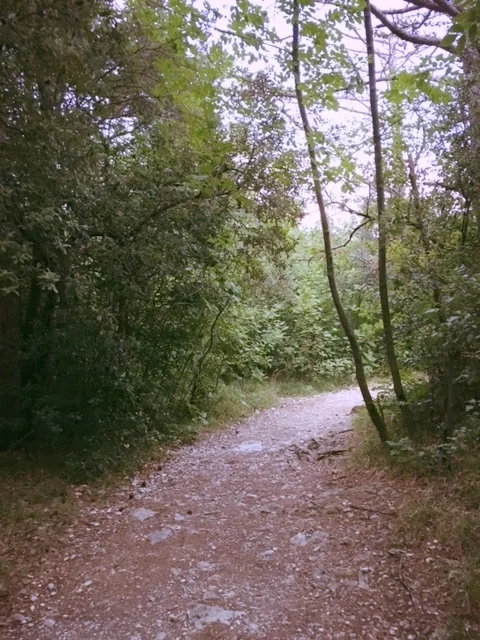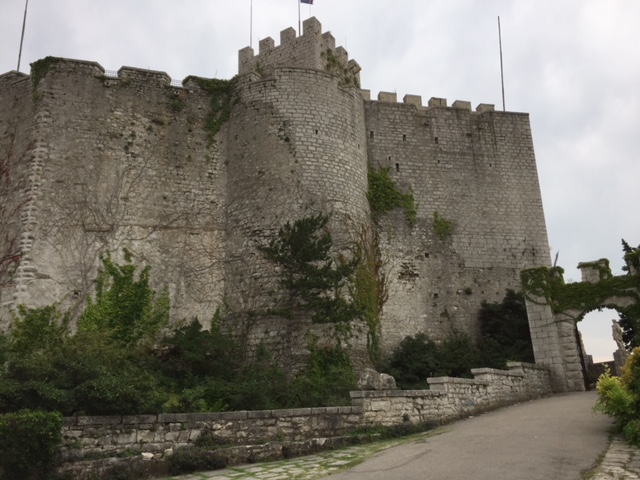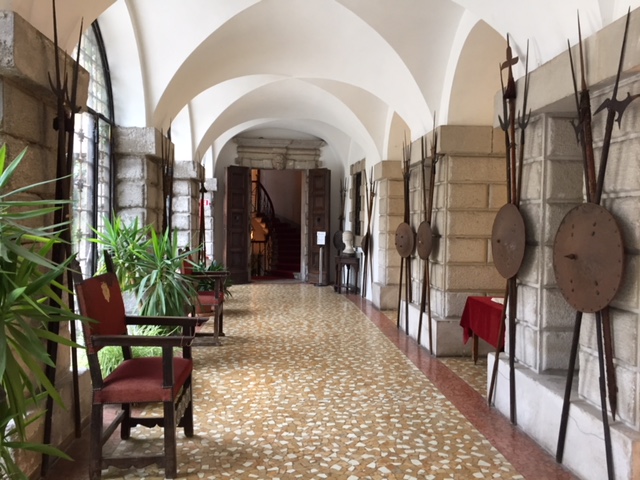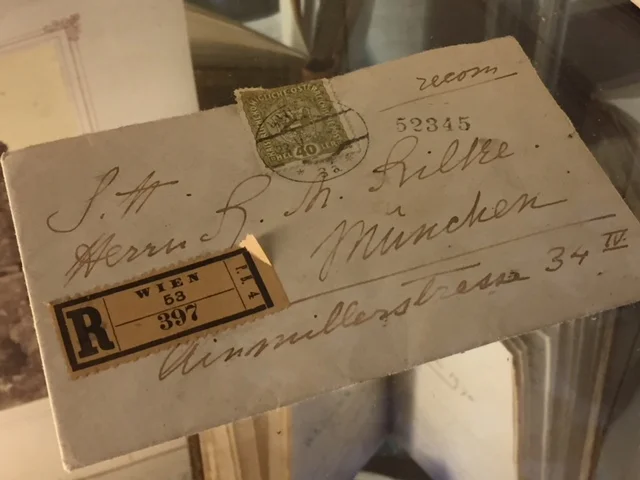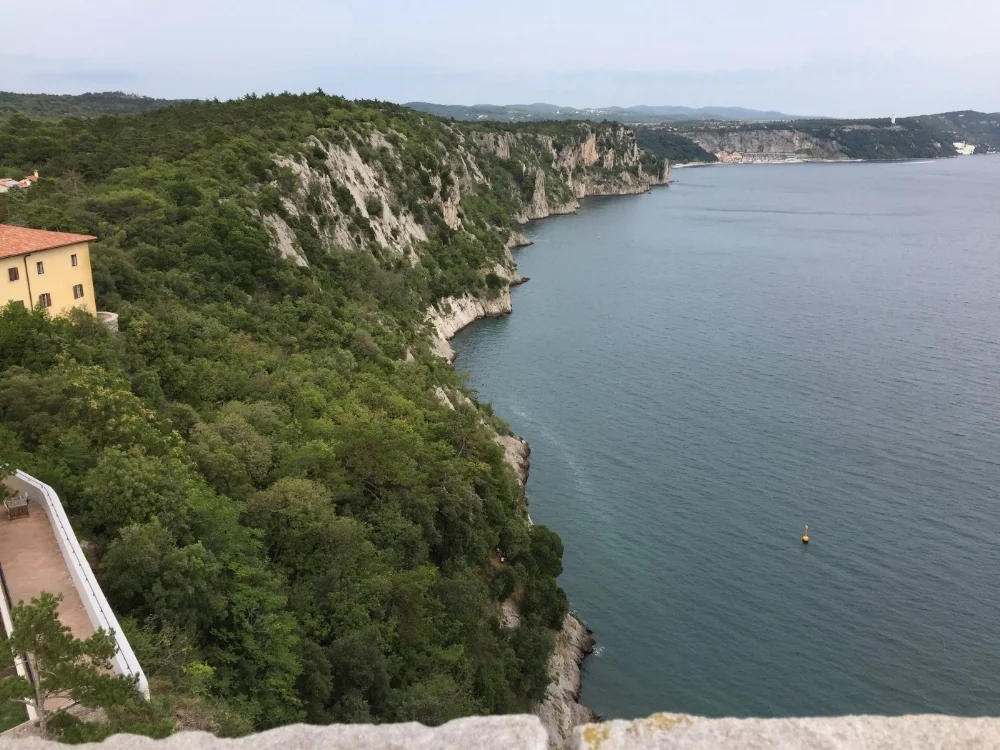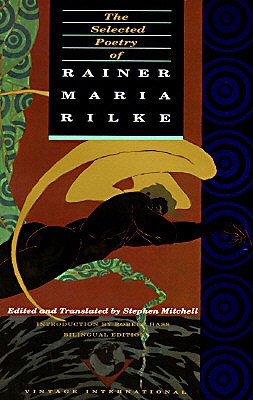Rainer Maria Rilke: A Thinking Path at Duino
“Who, if I cried out, would hear me among the angels’ / hierarchies?….” —Rainer Maria Rilke, opening lines of “The First Elegy” from Duino Elegies.
The Duino Elegies
In 1911, the poet Rainer Maria Rilke was invited to Duino Castle by the patroness of arts Princess Maria von Thurn und Taxis-Hohenlohe. Located off the Adriatic Sea in northern Italy, Duino Castle served as respite for Rilke. He arrived there feeling uninspired and despondent: the stress of financial concerns, extensive travel (and perhaps his own natural demeanor) had taken their toll. Duino Castle would become Rilke’s home from October 1911-May 1912; while here, he would begin his Duino Elegies. Nearly ten years later, and from Switzerland, he would finish them.
A Place for Inspiration
The landscape at Duino is an everpresent feature of the Duino Castle. Perched on a cliff that juts towards the sea, the castle has a near 360 degree view of nature. Walk by any window, it seems, and the sea fills the frame.
As surrounded as one might be by nature within the castle, the outdoors offers a closer connection. For Rilke, a path along the coast was a place for his feet to follow but for his mind to wander.
It was along this path that the Duino Elegies was brought to life. Rilke’s host, Princess Marie von Thurn und Taxis-Hohenlohe, wrote in her memoirs of the moment as recounted by Rilke:
Rilke later told me how these Elegies arose. He had felt no premonition of what was being prepared deep inside him; though there may be a hint of it in a letter he wrote: “The nightingale is approaching—” Had he perhaps felt what was to come? But once again it fell silent. A great sadness came over him; he began to think that this winter too would be without result.
Then, one morning, he received a troublesome business letter. He wanted to take care of it quickly, and had to deal with numbers and other such tedious matters. Outside, a violent north wind was blowing, but the sun shone and the water gleamed with silver. Rilke climbed down to the bastions which, jutting to the east and west, were connected to the foot of the castle by a narrow path along the cliffs, which abruptly drop off, for about two hundred feet, into the sea. Rilke walked back and forth, completely absorbed in the problem of how to answer the letter. Then, all at once, in the midst of his thoughts, he stopped; it seemed that from the raging storm a voice had called to him:“Who, if I cried out, would hear me among the angels’ hierarchies?”
He stood still, listening. “What is that?” he whispered. “What is coming?”
Taking out the notebook that he always carried with him, he wrote down these words, together with a few lines that formed by themselves without his intervention. He knew that the god had spoken.
Very calmly he climbed back up to his room, set his notebook aside, and answered the difficult letter.
By the evening the whole First Elegy had been written.
Writing (and Finishing) the Elegies
The Duino Elegies is composed of ten elegies and an appendix in which Rilke included fragmentary pieces and the poems he wrote in the effort towards completing the elegies but which “time, so to speak, destroyed before they could be born, or cut off in their development to such an extent that the broken edges show” [letter to Lou Andreas-Salome’, February 19, 1922].
While at Duino in 1912, Rilke completed the first and second elegy in January and February. He began both the third and sixth elegy between January and March 1912, but completed them at various stages in the following years. Lines 1-6a and 77-79 of the ninth elegy and lines 1-12 of the tenth elegy were written at Duino, but were completed in 1922. He wrote the Elegies over the course of ten years and from many cities: Paris, Munich, Ronda in Spain, but the most conducive to his Elegies creative output was in Muzot, Switzerland. Rilke would spend the last five years of his life there. When he finished the Elegies, he wrote to his friend and patron Anton Kippenberg on February 9, 1922:
My dear friend,
late [sic], and though I can barely manage to hold the pen, after several days of huge obedience in the spirit—,you must be told, today, right now, before I try to sleep:
I have climbed the mountain!
At last! The Elegies are here, they exist….
So.
Dear friend, now I can breathe again and, calmly, go on to something manageable. For this was larger than life—during these days and nights I have howled as I did that time in Duino—but, even after that struggle there, I didn’t know that such a storm out of mind and heart could come over a person! That one has endured it! that [sic] one has endured.
Enough. They are here.
I went out into the cold moonlight and stroked the little tower of Muzot as if it were a large animal—the ancient walls that granted this to me. And the ruined Duino.
The whole shall be called:
The Duino Elegies.
They will get used to the name. I think.”
*Photographs by Iliana Gutierrez
Additional Resources
Editor and translator of The Selected Poetry of Rainer Maria Rilke, Stephen Miller, includes extremely insightful notes to the poetry of Rilke. He provides context for the Duino Elegies by including excerpts from Rilke’s letters to friends, and also provides a more thorough timeline of when Rilke wrote each elegy. Notes to the poem itself are also included. Both of the excerpts from letters featured here come from this book.
The poem below was written by Rilke in 1924, nearly one year before his death.
A WALK
Already my gaze is upon the hill, the sunny one,
at the end of the path which I’ve only just begun.
So we are grasped, by that which we could not grasp,
at such great distance, so fully manifest—
and it changes us, even when we do not reach it,
into something that, hardly sensing it, we already are;
a sign appears, echoing our own sign . . .
But what we sense is the wind against us.
*Frontispiece
Along the Rilke Path in Duino. Photo taken by Iliana Gutierrez.

